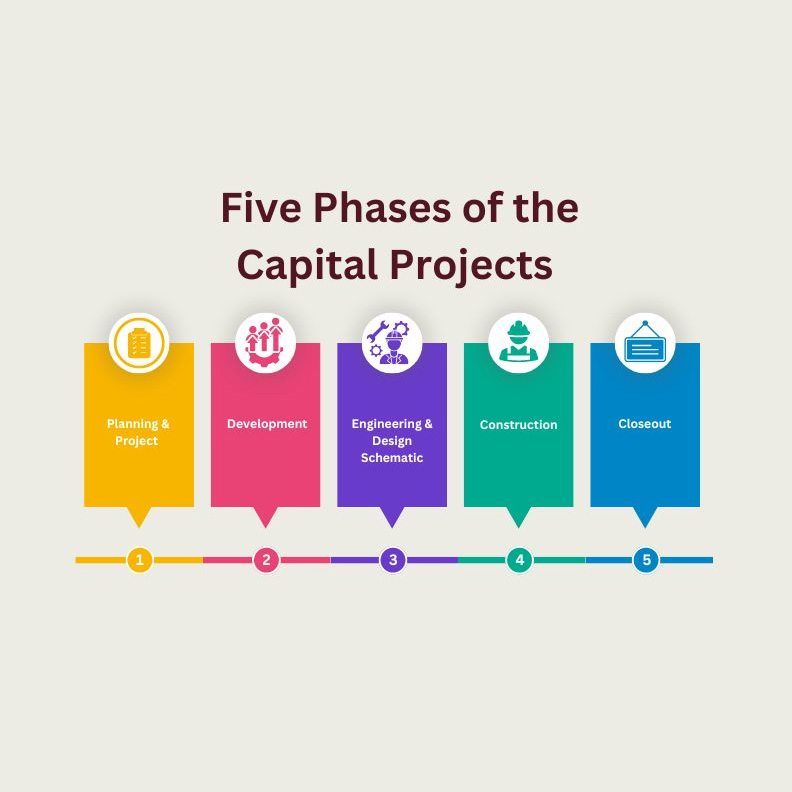An Owner’s Representative coordinates numerous peripheral activities that can significantly impact the project’s progress while playing a vital role in maintaining credibility with stakeholders.. These might include procuring planning permissions, environmental regulation compliance, or managing stakeholder relations. Effective management of these aspects prevents delays and ensures a smooth construction process.
Through transparent communication and proactive issue management, they build trust, avoid misunderstandings, and ensure project completion to all stakeholders’ satisfaction. Therefore, an Owner’s Representative’s broad expertise and proactive approach help navigate the complexities of construction projects, ensuring successful outcomes.
The following is a comprehensive list of roles and responsibilities an Owner’s Representative may perform:
Project Planning: This includes determining the project’s scope, helping in setting up a feasible schedule, and defining clear objectives. The Owner’s Representative needs to understand the owner’s vision and align the project’s path accordingly.
Budget Management: The Owner’s Representative is responsible for developing a realistic budget, tracking project costs, and managing finances. This involves assessing and approving invoices, controlling change orders, and conducting regular cost reports to keep the owner informed.
Design Management: This involves collaboration with architects, engineers, and designers to ensure the library’s design aligns with the project’s goals, schedule, and budget. The Owner’s Representative often reviews design documents, schedules, and quality control procedures to make sure they meet project specifications.
Procurement Oversight: The Owner’s Representative often oversees the procurement of necessary materials, equipment, and services. This includes the review of bids, contract negotiation, and the selection of contractors and subcontractors.
Quality Control: Ensuring quality in construction and adherence to the set standards and specifications is a crucial responsibility. This includes overseeing construction activities, inspections, and coordinating with third-party testing agencies.
Construction Management: The Owner’s Representative coordinates with the construction manager or general contractor, overseeing day-to-day activities on the job site, and ensuring the project is on track for completion within the specified timeframe.
Risk Management: Identifying potential risks in all project stages and developing mitigation strategies to avoid delays, budget overruns, or quality issues is an essential responsibility.
Communication and Reporting: Regular reporting to the owner about the project status, potential challenges, and progress made is crucial. Also, facilitating effective communication between all project stakeholders is part of this role.
Regulatory Compliance: The Owner’s Representative ensures the project complies with local, state, and federal regulations. This includes obtaining necessary permits, ensuring safety standards are followed, and coordinating with regulatory agencies.
Closing and Transition: As the project nears completion, the Owner’s Representative coordinates with the construction and design teams to resolve any pending issues. This includes overseeing the punch list, ensuring the closeout documentation is complete, coordinating final inspections, and managing the transition to the operational team.
Public Relations and Community Engagement: Particularly in public projects like library construction, the Owner’s Representative often serves as a point of contact with the public and any interested community groups. They manage public relations, coordinate with local officials and community leaders, and address public concerns that may arise during the project.
Stakeholder Management: The Owner’s Representative acts as a conduit between multiple stakeholders including architects, contractors, subcontractors, local authorities, and the owner. They facilitate meetings, mediate conflicts, and ensure all parties are aligned with the project goals.
Change Management: During the construction process, unexpected changes may occur. The Owner’s Representative manages such changes, evaluating their impact on time, cost, and quality, and negotiating the best outcomes for the owner.
Documentation and Record Keeping: Keeping meticulous records is an integral part of this role. It includes maintaining contracts, invoices, change orders, communication logs, minutes of meetings, and other vital project documents. This documentation serves as a critical resource for resolving disputes and for reference after project completion.
Sustainability Oversight: As public library projects often aim to integrate sustainable practices, the Owner’s Representative might oversee the implementation of these practices. This could involve ensuring LEED compliance, managing green materials sourcing, and overseeing the installation of energy-efficient systems.
Warranty Management: After project completion, the Owner’s Representative may assist with warranty management, ensuring that any defects identified during the warranty period are addressed by the responsible parties.
Training and Handover: Upon project completion, the Owner’s Representative coordinates the training of library staff regarding the operation and maintenance of new systems, ensuring a smooth transition.
Post-Completion Evaluation: The Owner’s Representative may also be involved in evaluating the project’s success after completion, assessing whether the project goals were met, and providing recommendations for future projects.
By undertaking these roles and responsibilities, an Owner’s Representative can alleviate the complexities and challenges that come with the development and construction of a project. Their in-depth involvement from inception to completion ensures that the project aligns with the owner’s objectives, time constraints, and budgetary needs, while maintaining high-quality standards and adhering to regulatory requirements. Their role is pivotal in ensuring that the library serves its purpose effectively and efficiently in serving the public good.
At Front Line Advisory Group, we are pioneers in Capital Improvement Bond Management, leveraging unparalleled expertise and deep industry insights. Our mission extends beyond consultation – we empower our clients to realize the full potential of their investments, ensuring tax dollars are put to maximum use through astute Program Management Consulting. For more information or to commence your journey towards transformative bond management, reach out to us at info@frontlineadvisorygroup.com.













